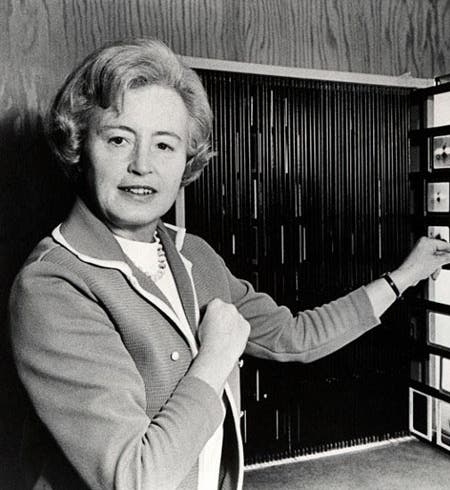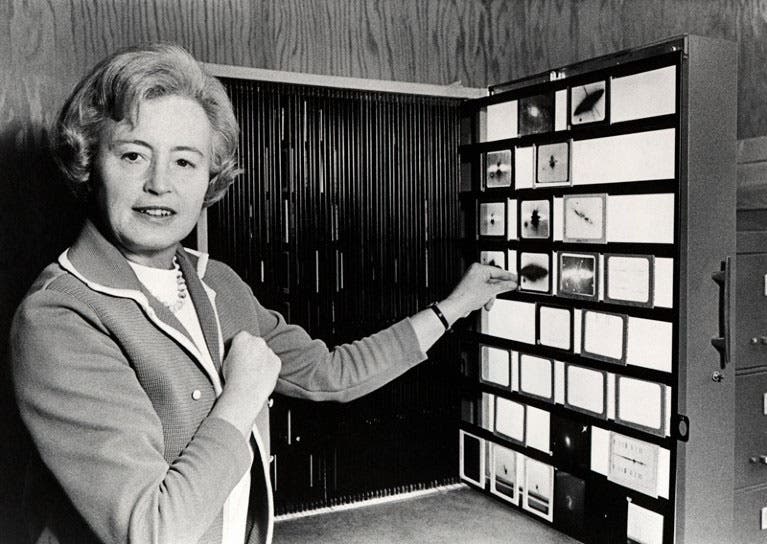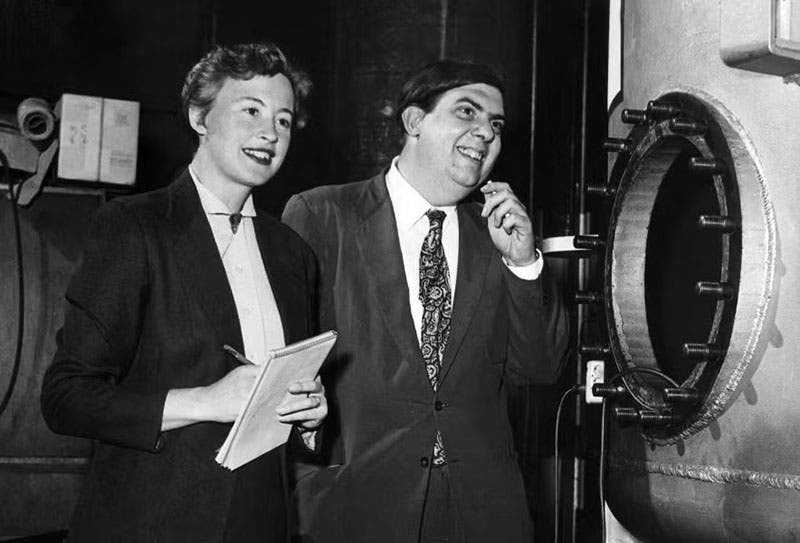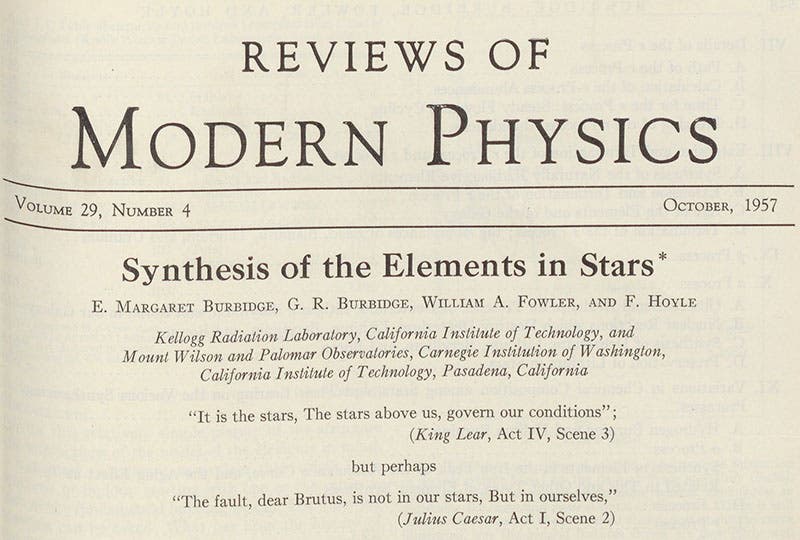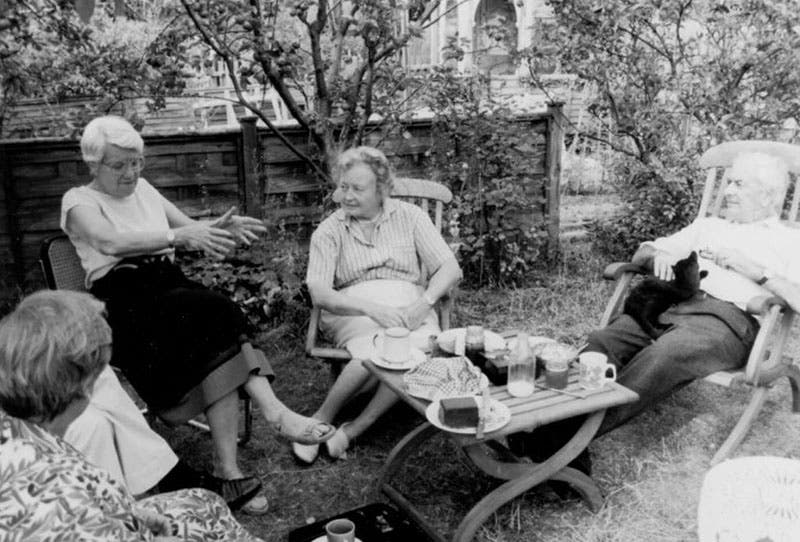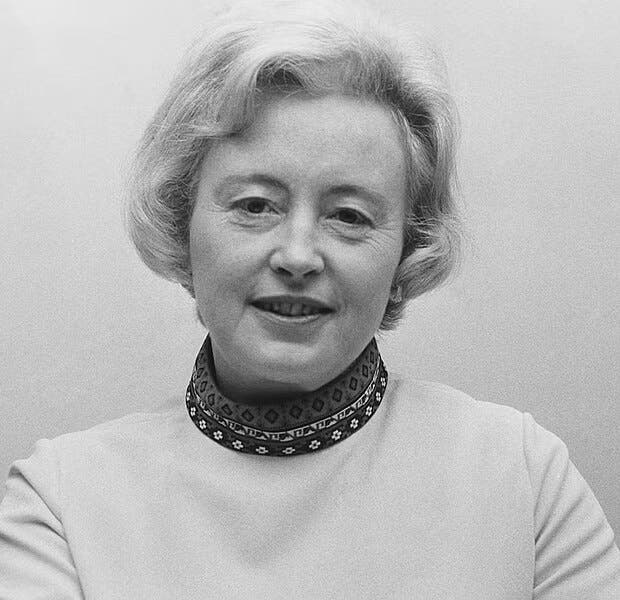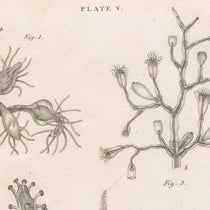Scientist of the Day - Margaret Burbidge
Margaret Burbidge, an English/American astrophysicist, was born Aug. 12, 1919, in Davenport, in Greater Manchester. She studied astronomy at the University of London and received her PhD during WWII. After the war, she applied for a postgrad fellowship at the Carnegie Observatories, and was rejected, since it required work at the Mount Wilson 100-inch reflector, and women were not allowed to use it. It was her first introduction to gender inequality in the astronomical profession, something she would actively combat throughout her career.
She spent several years at the Yerkes Observatory in the U.S. (1951-53), and then returned to England to work on the problem of the abundance of the elements in stars. Margaret was an observational astronomer, and in 1948, she had married a theoretical physicist, Geoffey Burbidge, whom she converted to a theoretical astrophysicist, and the two worked together. At Cambridge, they were joined by Fred Hoyle, who did not believe that the abundance of elements in stars could be explained by the new “Big Bang” hypothesis, and by Willy Fowler, an American experimental physicist who studied the energies necessary to transmute elements in accelerators.
In 1967, the four scientists published a milestone paper in which they proposed that only hydrogen and helium were primordial elements; all other elements, such as carbon, oxygen, and nitrogen, were “cooked” into existence in the hot interiors of stars. This theory of stellar nucleosynthesis was an immediately preferable hypothesis to the proposal that the elements were created in the Big Bang. Their paper, “Synthesis of the elements in stars,” was published in Reviews of Modern Physics in 1957 (third image) and was an instant classic. After the initials of the last names of the authors, it is always referred to as “B2FH”, pronounced "B-squared-F-H," where Margaret is the B and husband Geoffrey is the "squared." It has the status in astrophysics of the 1953 DNA paper of Watson and Crick in molecular biology.
Margaret and Geoffrey moved eventually to the University of California at San Diego, where in 1979, she became director of its Center for Astrophysics and Space Science. She was also the Director of the Royal Greenwich Observatory for 15 months (1973-74) – the first woman to serve in that post – and was also elected president of the American Astronomical Society (1976) and the American Association for the Advancement of Science (1982). She turned down the Annie Jump Cannon Award in 1972 because it was given only to women, and she thought gender should not be a factor in the measure of success in her profession.
There are many photos of Margaret Burbidge at various stages of her career; in all of them, she comes across as confident, forceful, and personable – someone you would like to know and be inspired by, as many seem to have been. Margaret died on Apr. 5, 2020, at the age of 100.
William B. Ashworth, Jr., Consultant for the History of Science, Linda Hall Library and Associate Professor emeritus, Department of History, University of Missouri-Kansas City. Comments or corrections are welcome; please direct to ashworthw@umkc.edu.

